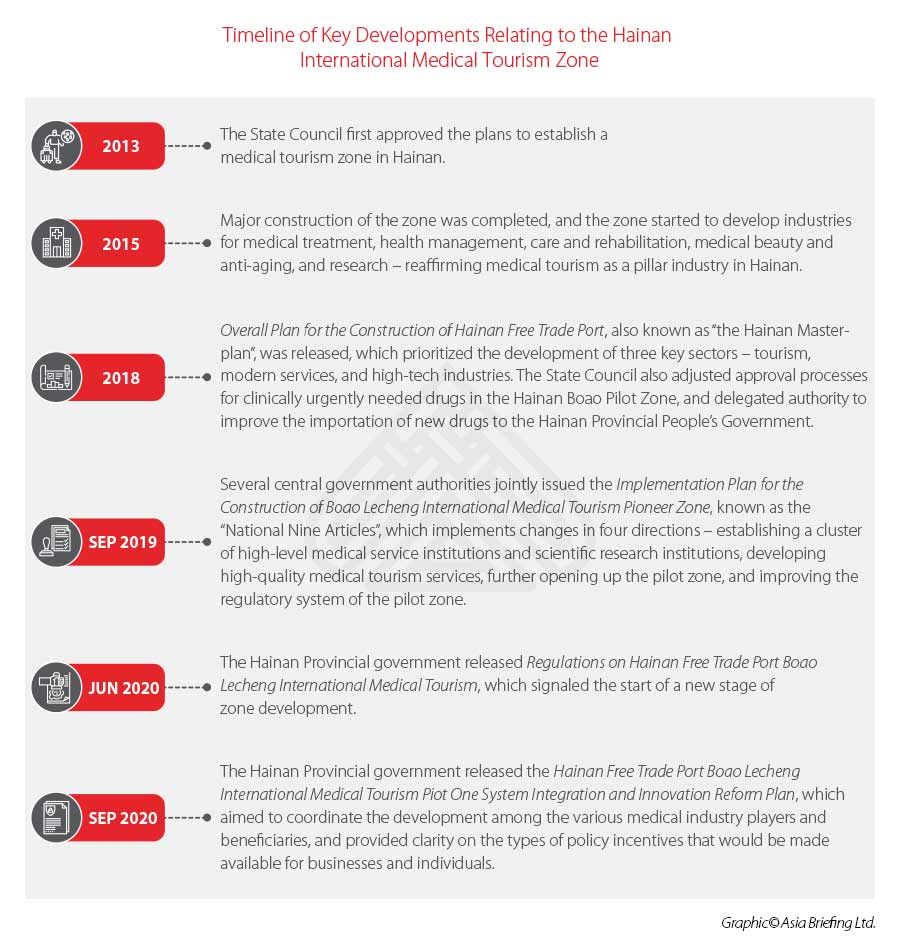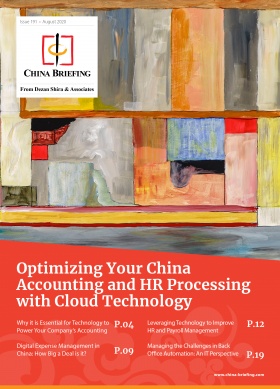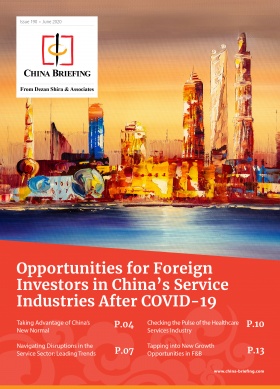Hainan Medical Tourism Zone: What’s in the Integration and Innovation Reform Plan?
On September 1, the Hainan Provincial People’s Government issued the Integration and Innovation Reform Plan (IIR Plan) for the new Hainan Boao Lecheng International Medical Tourism Pilot Zone (Hainan Medical Tourism Zone).
The latest reform plan focuses on improving current administrative processes to smoothen the coordination between respective medical industry players and further improve the flow of information, goods, personnel, and investment needed for more innovative medical breakthroughs.
The Hainan Medical Tourism Zone sits within broader plans to transform Hainan into the world’s largest Free Trade Port, where other industries, such as modern services and high-tech industries, also play a central role. In 2020, the zone also dovetails with the government’s plans to reprioritize healthcare within the national agenda – by way of initiating structural reforms and promoting digitization – in the wake of the COVID-19 outbreak.
The IIR Plan provides further clarity on the types of policy incentives that would be made available for businesses and individuals in the medical tourism zone.
We lay out some of the key measures within the Integration and Innovation Reform Plan below.
The Hainan Medical Zone IIR Plan
The latest IIR Plan is comprised of 10 main goals – four measures promote the free and convenient flow of trade, investment, capital and personnel, two measures promote medical innovation (for medical insurance payments and new trial models of clinical real-world data application), two measures establish a minimalist approval system (for project construction and promote the reform of ‘minimalist approval’ in medical and health care), and the two measures strengthen the integration and risk prevention controls within the current operation system.
Together, the plan aims to advance a coordinated policy agenda underscored by the central goals within the Hainan FTP Masterplan, such as promoting minimalist approvals, examination of key medical devices and drugs, and the free and convenient flow of trade, investment, and funds.
Within the plan, the 10 goals are further broken down into 34 specific policy measures. Some of the more notable measures are stated below.
Creating the only ‘global special drug insurance’ in China and innovating payment methods for medical insurance
Multiple advances have already been made to the administration of health insurance in Hainan, including improving health insurance access by way of relaxing the age, occupation, and medical history restrictions as well as eliminating the waiting period, deductible amount, and prerequisite medical examination requirements – which have also served as significant barriers to entry in the past. Under the latest IIR document, the following changes have been made:
- Under the “medical insurance + commercial insurance” mechanism, the domestic unlisted drug will be added to the domestic health insurance;
- A system of “global special drug insurance” will be established, alongside specific reform measures to guide the innovation of payment methods for this medical insurance; and
- Introduce a commercial insurance payment platform to provide plans, such as installment payment for patients’ medication.
Facilitating the suspension and residence of foreign personnel
Already, Hainan has introduced a series of new measures to provide a more convenient pathway for high-level talents, technical and skilled personnel, and foreign students to enter, reside, and work within the free trade zone area. Under the latest IIPR document, the following changes have been made that relate to the medical industry:
- New measures will be introduced to facilitate the entry, stay, and residence of foreign medical personnel, patients, and accompanying persons;
- Medical personnel working in the park can apply for work-type residence permit consistent with the work contract; and
- Foreigners and their accompanying family members can apply for medical treatment private affairs visa or residence permits with the same service period.
Free and convenient trade in licensed medicine and equipment
The Implementation Plan on Supporting the Construction of Boao Lecheng International Medical Tourism Pioneer Zone (2019) (“the Hainan Medical Zone Implementation Plan”) introduced measures to allow in-zone medical institutions to streamline the import of urgently needed foreign drugs and medical equipment that are not yet approved by Chinese authorities. However, this latest document introduces additional measures to facilitate trade in this area:
- Build a full-process traceability platform for unlisted licensed pharmaceutical and medical device using blockchain, IoT, 3D geographic information system, and other new generations of information technology;
- Optimize the functionality of domestic bonded warehouse storage used for unlisted innovative drugs and equipment under the “warehouse first, quarantine later” model; and
- Host an exhibition to support the online/offline promotion of international innovative medical devices that have not yet been listed.
Using clinical real-world data to apply for imported product registration
As previously introduced in the Hainan Medical Zone Implementation Plan, the clinical real-world data generated by urgently needed imported medical devices and drugs can be used to apply for imported product registration if they meet the relevant requirements of China’s medical device and pharmaceutical registration declaration.
This has shortened the time for global innovative products to enter the Chinese market and reduce registration costs, thereby enabling many international innovative medical devices and drug companies to actively promote their products and enable entry to China.
Implementing the reform of “minimalist approvals”
Under this category of reforms – approvals for project construction, medical institution setups, and registration will be streamlined.
For example, the plan cancels six project approval items and introduces the concept of combined letters and certifications.
It also establishes the two-in-one institutional supervision model, whereby the medical and drug regulatory agencies will be jointly established by the health department to improve efficiency of licensing and approvals.
For medical institutions that wish to set up in the zone, the number of approvals will be reduced, removing the need to obtain an “approval for setting up a medical institution” and now merely requiring the “medical institution practicing permit”.
Finally, a standard work guide will be developed to greatly reduce the time limit for registration of medical and nursing practice licenses. Domestic medical care registration is to be completed within one working day, while foreign medical care registration is to be completed within five working days.
Other notable measures to facilitate investors
Within the IIR plan, other measures include:
- Free and convenient investment – creating a platform for medical innovation and entrepreneurship to systemically accelerate the introduction, agency, investment, use, and registration of global innovative medical devices with special focus on the 1+x model that allows medical institutions to rent and purchase with high efficiency and low costs; and
- Free and convenient cross-border capital flow – further promoting the settlement facilitation in cross-border transactions of medical treatment, pharmaceuticals, and medical devices by simplifying exchange management, introducing a ‘supervisory sandbox’ mechanism, and piloting innovating artificial intelligence, big data, and cloud computer technology.
Timeline of developments in the Hainan Medical Tourism Zone
Since the medical tourism zone was first developed in 2013, the central and provincial governments have released a number of new policies to make possible the transformation of the Hainan International Medical Zone into a world-class medical tourism destination and medical technology innovation center by 2030.
In September 2019, the Hainan Medical Zone Implementation Plan, also known as the National Nine Articles, first introduced numerous key policies and delegated the authority to approve the import of drugs to the local authorities. The plan had the following effects:
- Allowed in-zone medical institutions to import much needed foreign drugs and medical equipment that are not yet approved by the top drug authority in China.
- Allowed patients to take imported drugs of limited dosage (which have not been registered in China) out of the pilot zone for personal use.
- Allowed research hospitals to collect real-world clinical data from patients using imported drugs and medical devices. The data could be used to expedite the registration and approval process for innovative drugs and medical instruments to enter China.
- Encouraged state-level public hospitals to enter the zone. Three to five public hospitals will be authorized to franchise brand, trademark, and technology to medical institutions in the pilot zone.
- Built an evaluation center for imported drugs and medical devices to facilitate the clinical use of imported drugs and medical devices.
Since then, developments within the Hainan International Medical Tourism Zone have been rolled out quickly – this latest plan marking the third key document released by the Hainan Provincial government just in 2020 alone.
The latest reform plan adds the development of a “global special drug insurance” and implementation of “a full-process pharmaceutical traceability platform” to a growing list of new systems and processes that will be adopted to support the growth of this zone.
The most recent document also removes a lot of the red tape that existed for the import of new medical products, the construction of new medical projects, or the licensing of medical institutions and practitioners within the zone.
See below for a summary of the key policies relating to the development of the Hainan International Medical Tourism Zone.
Hainan Medical Zone investment prospects
In recent years, the rise of more health-orientated consumers coupled with a rapidly aging population in China have caused a surge in demand for health products and medical services.
In 2018, it was reported that mainland Chinese residents spent an estimated US$250 billion on health products and services – this proportion was forecasted to experience an annual growth rate as high as nine percent for the period of 2019-2024.
In 2020, with the advent of the COVID-19 outbreak, the trend is accelerating multifold, and China’s economy is uniquely placed to manufacture and export healthcare products and medical services to other countries.
For these reasons, China’s healthcare market now has more opportunities than ever before – with Hainan Boao Lecheng International Medical Tourism Pilot Zone fast becoming one of the leading destinations for healthcare investment in the country.
Medical companies engaged in the manufacture, import, distribution, or sales of medical devices, medical technology, or pharmaceuticals may now be eligible to access fast-tracked approvals and relaxed regulatory oversight, and can benefit from new technology and health insurance reform – all of which creates a better market environment for investors.
Many foreign investors have already been able to avail such policy incentives – with data from the Hainan provincial department of commerce showing that from January to June 2020, a total of 203 foreign enterprises were set up in Hainan, up 24.54 percent year-on-year, with 50 of them established in June itself.
Similarly, in 2020, newly registered companies hit a record of 75,000 from January to August, showing a year-on-year increase of 75.26 percent, the highest growth rate in the country, according to the provincial market supervision administration.
For further information on how you can apply for these new policies and incentives please feel free to reach us at china@dezshira.com.
About Us
China Briefing is written and produced by Dezan Shira & Associates. The practice assists foreign investors into China and has done so since 1992 through offices in Beijing, Tianjin, Dalian, Qingdao, Shanghai, Hangzhou, Ningbo, Suzhou, Guangzhou, Dongguan, Zhongshan, Shenzhen, and Hong Kong. Please contact the firm for assistance in China at china@dezshira.com.
We also maintain offices assisting foreign investors in Vietnam, Indonesia, Singapore, The Philippines, Malaysia, Thailand, United States, and Italy, in addition to our practices in India and Russia and our trade research facilities along the Belt & Road Initiative.
- Previous Article Strategies for Managing Enterprise Downsizing and Salary Reduction in China After COVID-19
- Next Article China Extends Tariff Exemption for 16 US Products – Full Lists Included








